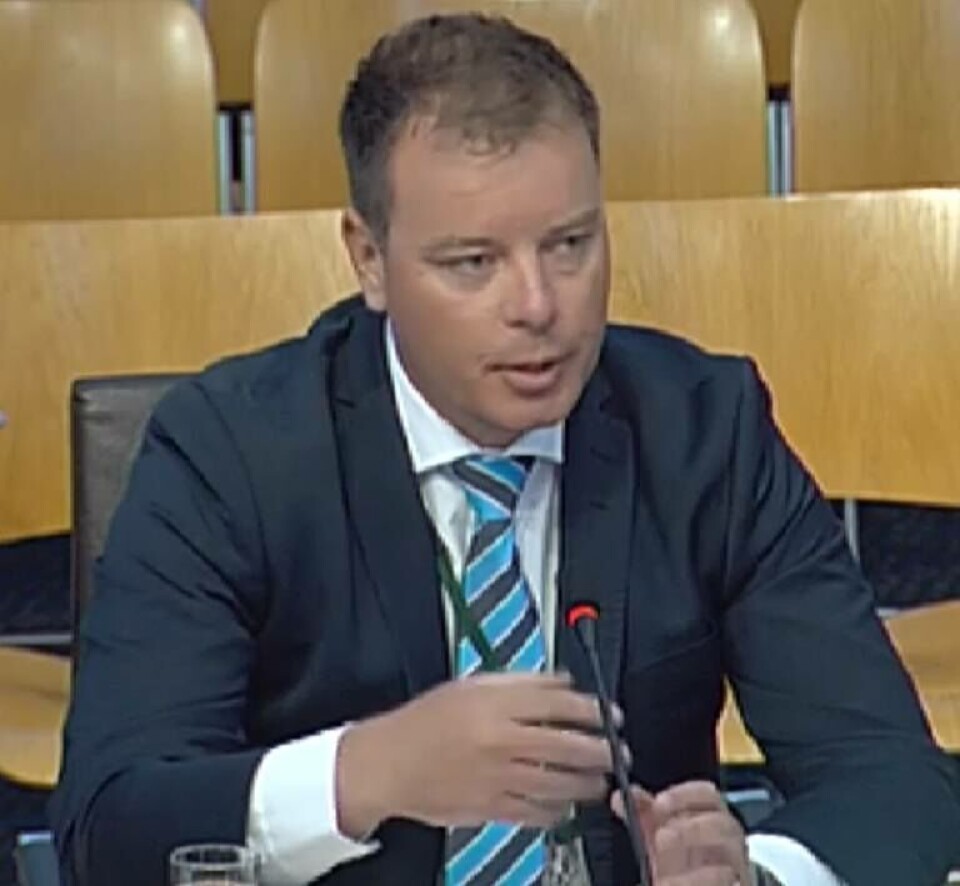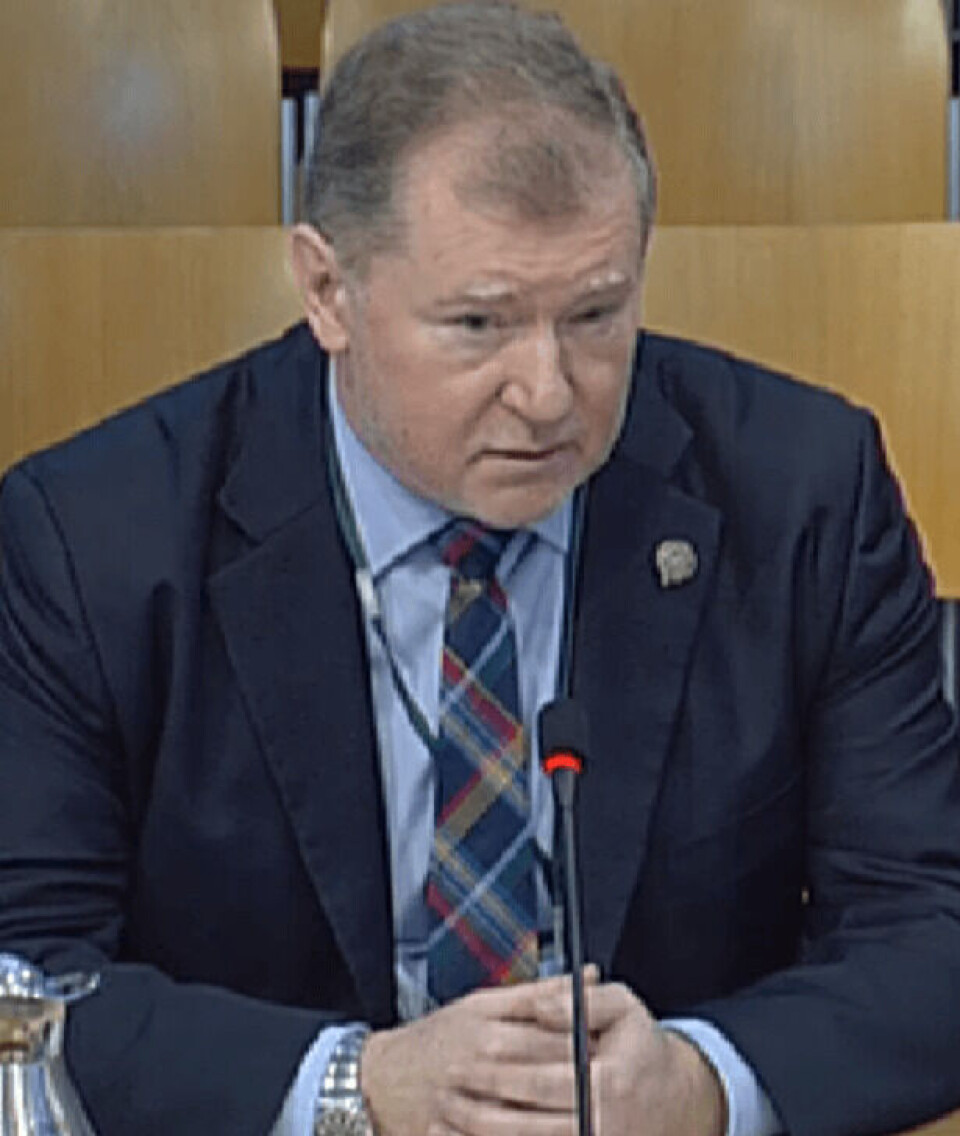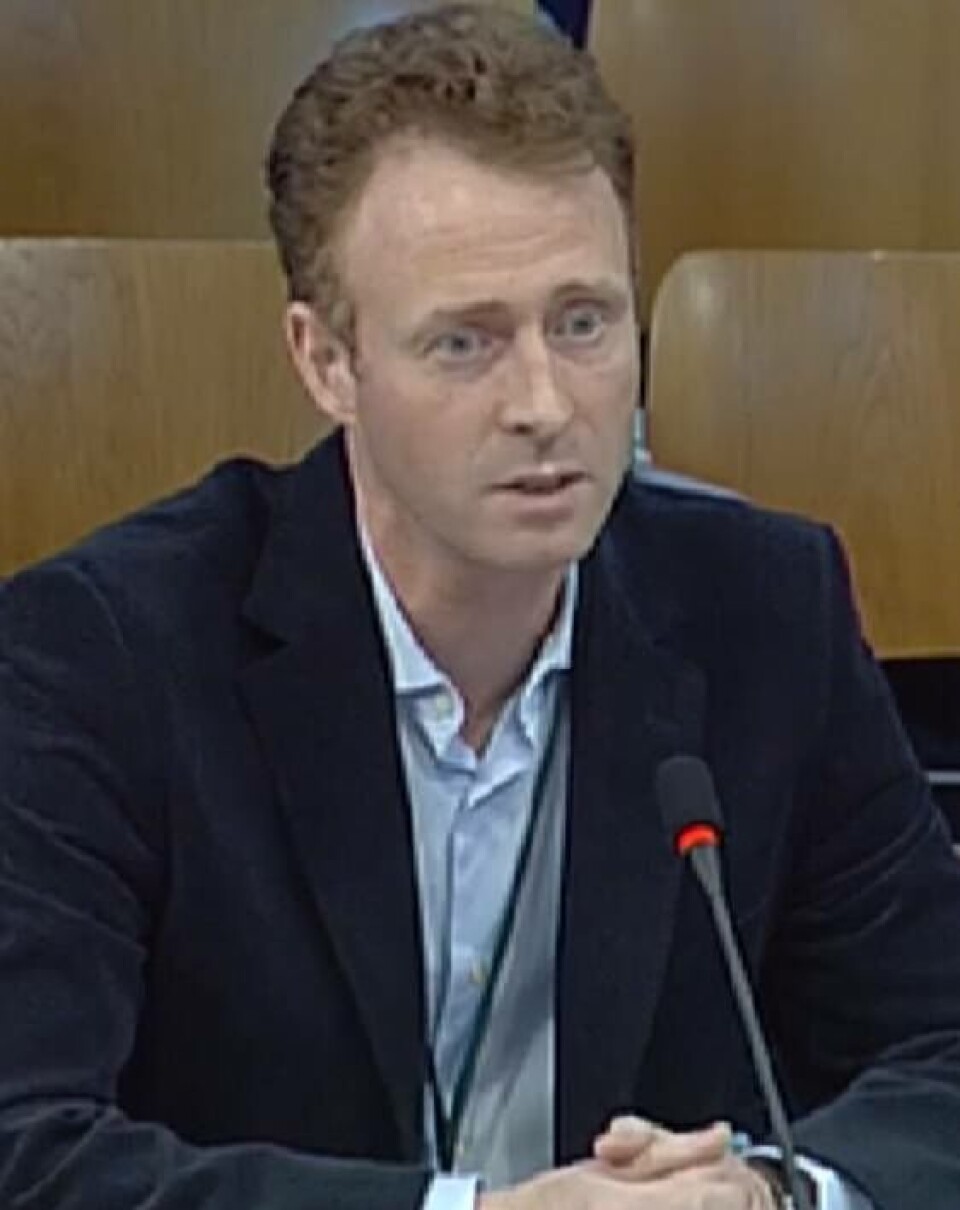
Keep rules tight but streamline the system, say fish farmers
Scotland’s salmon farmers want to keep the tough regulations governing the industry because they add to the special reputation – and higher price – their fish have in the global market.
But they would like to see the regulatory system streamlined, and a more supportive culture, company chiefs told the Scottish Parliament’s Rural Economy and Connectivity committee inquiry into the industry today.
During a two-hour question and answer session at Holyrood, MSPs were also told that:
- Companies were not opposed to relocating some farms to less sensitive areas if this would lead to bigger, more productive farms
- Grieg Seafood Shetland had reduced the number of its farms from 33 to 17 to tackle biological problems
- The Natural Trust for Scotland tactic of comparing fish farm waste volumes with human sewage was “an apple-and-pears” comparison
- Companies had to buy or build homes for employees because of a housing shortage in rural areas
The panel of witnesses comprised Marine Harvest Scotland managing director Ben Hadfield, Grieg MD Grant Cumming, Scottish Salmon Company MD Craig Anderson, former Scottish Salmon Producers’ Organisation chief executive Scott Landsburgh, and Stewart Graham, owner of major industry supplier Gael Force Group.

Asked by Stewart Stevenson (Banffshire and Buchan Coast, SNP) what benefits the industry provided to communities adjacent to salmon farms, Hadfield said Marine Harvest had an annual wage bill of £47 million, and that is was important that people living on the west coast had a career and steady wage progression.
Anderson said SSC’s annual salary bill was £16m. He said that many of its staff were long-serving, adding: “We have third-generation families working with our companies.”
Landsburgh said that last year salmon farming contributed around £1m to communities through various projects.
Jamie Greene (West Scotland, Con) wanted to know how Scottish salmon could stand out in the international and domestic markets.
Premium price
Cumming explained that it commanded a premium price, partly because the country’s regulatory standards were very highly regarded.
Hadfield said: “You see a premium for Irish organic, then Scottish Label Rouge. Generally Scottish salmon trades around 50-60p per kilo more than Norwegian salmon.”
Graham said: “Regulation needs to be rationalised but robust regulation is seen as part of Scottish provenance.”
Greene asked Hadfield why many of Marine Harvest’s Norwegian farms had Aquaculture Stewardship Council (ASC) certification, but only one MH Scotland had it.
Hadfield explained that the company had been unable to gain certification because the ASC rules didn’t allow smolt from freshwater lochs. That had now changed following the ASC’s decision to recognise the scientific circumstances of the lochs, which were different to those elsewhere.

Asked if Grieg and SSC intended to apply for ASC certification, Cumming said it was just one standard among many, and Grieg already satisfied the criteria for four, including RSCPA and Global GAP.
Anderson said SSC also had four separate accreditations, including Best Aquaculture Practice, which he believed was the best because it covered the entire value chain. He said the company already spent £160,000 a year on certification.
Landsburgh told the MSPs: “80% of our production is Global GAP. The backstop of all the production standards is the Scottish Code of Good Practice. All other countries have followed that.”
Gail Ross (Caithness, Sutherland and Ross, SNP) asked what improvements were still necessary to improve the industry overall.
Cumming said more could be done to coordinate regulation, while Anderson said it was the industry’s responsibility to keep improving animal welfare and care of the benthic layer.
Good regulation
Hadfield, who started his career as an environmental scientist, said: “We have had very good regulation to protect the environment and it is frustrating to hear comments that we don’t have that.”
He said it had been a difficult period for salmon farming, pointing out that between 2009-11 MH Scotland had the lowest mortality in the world at 7%, but that warmer seas and reduced efficacy of sea lice medicines had led to increased losses.
He believes fewer but larger farms that are less connected to one another will help alleviate problems.
Richard Lyle (Uddingston and Bellshill, SNP) asked why output had been flat.
Landsburgh pointed to biological problems and red tape. He said: “The consenting process is tough. We like it to be tough but there needs to be a shift in the culture here. The baseline is to ensure that we grow sustainably from a good health basis.”

On the issue of biological problems, Cumming said Grieg had reduced production from a peak of 19,000 tonnes to 12,000 tonnes to help solve them. He said: “We have got those problems under control and we can begin to grow from there.”
Lyle asked Hadfield: “What can we do to resolve the problem we have got and the people managing rivers have got?”
Hadfield replied: “Ultimately the progressives on the wild fish side and the industry working together will provide the solution.”
Mike Rumbles (North east Scotland, LibDem) referred to a report on the environmental impacts of salmon farming by the Environment, Climate Change and Land Reform (ECCLR) committee, asking: “Do you recognise the environmental problems and if so what do you think you need to do to change your operations?”
Hadfield said that as an industry that relied on the marine environment to clear its waste, it did recognise the problems, but he added: “There are elements of the report that I believe go beyond evidence-based criticism.”
Rumbles said the ECCLR report was very critical of regulators such as SEPA, accused of operating in their own “silos”, and wanted to know if the industry was self-regulating.
Harsh criticism
Landsburgh said the ECCLR criticism was “a bit harsh” on people doing a tough job, and pointed out that new depositional modelling and regulations, coupled with hydrodynamic modelling, would improve accuracy for site planning.
He added: “That has been a lot of work and it has been done in collaboration, not in a silo.”
Hadfield said regulation was good but disjointed, adding: “There is not a holistic overarching strategy in Scotland over how this industry should move further.”
The inquiry heard that farm-by-farm reports on lice numbers were now available on the SSPO website, although to ensure accuracy these were three months old.
Convener Edward Mountain (Highlands and Islands, Con) pointed to an example from Norway, where a website gave farm-by-farm lice details from April 16-22, along with lots of other information, and asked why that couldn’t happen here.
Landsburgh said it required a lot of resources, and that much of the information was available on other sites.
Hadfield said it was one area where Norway was better than Scotland, although there were many areas where the reverse was true.
Malicious attack
Graham said: “The risk that I see with up-to-date full disclosure is of malicious attack on a commercial basis, and I have even seen some evidence of personal attack.”
Asked about the link between sea lice from salmon cages and wild salmonids, Hadfield said: “Excessive levels of farm-derived lice pose a hazard to wild fish.”
He said the way forward was to have a “gold standard” of transparency and growth areas away from wild fish, but also pointed out: “We suffer from the continual overstatement of the effect of lice on wild fish.”
Lyle drew Hadfield’s attention to a letter he’d written to ECCLR committee chairman Graeme Dey, in which the MH boss criticised the “misplaced” comparison by the National Trust for Scotland that the waste from one fish farm was half the volume of all the human waste effluent in Scotland. Lyle asked why it was misplaced?
Apples-with-pears comparison
Hadfield said: “What frustrated me with that is it was an apples-with-pears comparison, and really a body like that should in my view do a little bit better.
“First of all, sewage is treated because it contains faecal coliforms, which are harmful to humans. Fish are ectothermic, they are a cold water species, they don’t contain faecal coliforms.
“Secondly, when people compare it to a sewage equivalent they often choose to use phosphorous, and phosphorous is an issue when it’s discharged into a freshwater environment in terms of eutrophication. It’s not an issue generally when it’s discharged into a marine environment.”
At the end of the session, Mountain asked the panel: “Do you think there is some scope for industry to reconsider the positioning of their farms to less environmentally sensitive areas, and [as] part of that process, to combine, maybe increase the size of those farms elsewhere, to allow them to remove them from industry elsewhere?”
Relatively sheltered
Cumming said that was a process that was currently ongoing: “Most of the sites that we have chosen to shut down are relatively sheltered. The reason that we are moving away from them is that because they’re sheltered, they have less ability to sustainably support a large amount of fish.”
He said they were also sites that could sometimes have worse sea lice and gill health problems.
Anderson said SSC was made up of seven smaller companies, adding that it inherited a lot of what would today be regarded as “miniscule” sites of around 700 tonnes capacity.
“We have been closing them down and essentially moving them out,” he said.
Hadfield said it depended on the site, but there was a “real opportunity to take down some of the conflicts that exist, particularly with the wild fish sector”.
Graham finished with a warning that it was easy to say that farms should move offshore but not so easy to do. “It is a difficult, challenging environment, not just for people but also for fish.”






















































